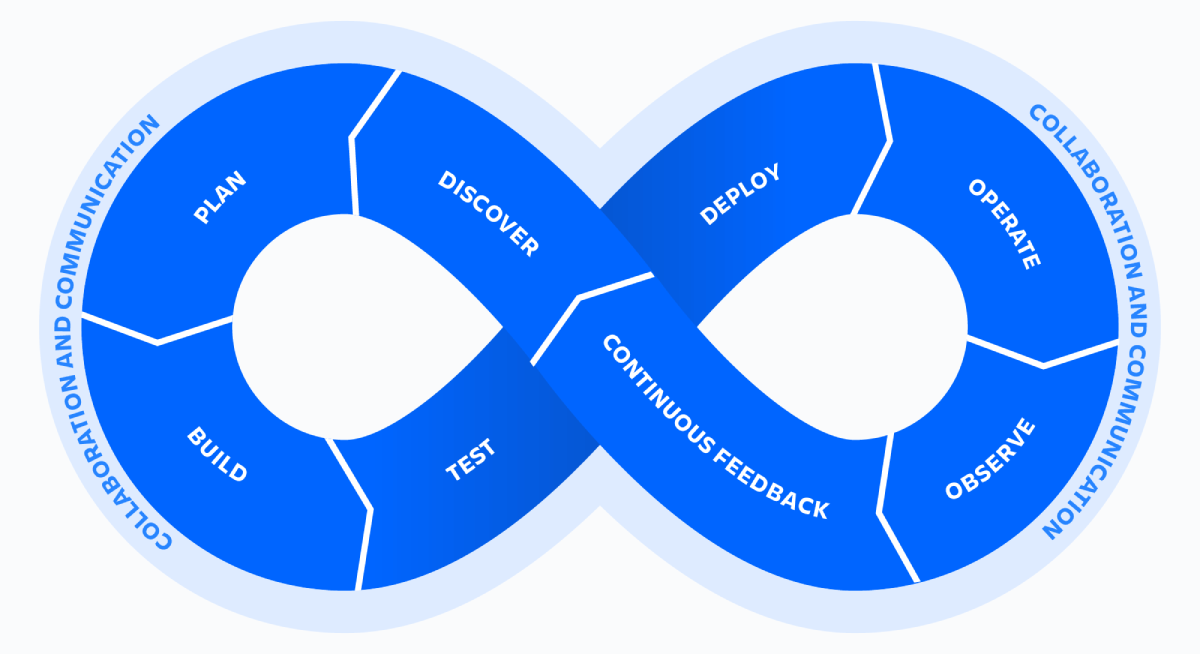The DevOps lifecycle
Because of the continuous nature of DevOps, practitioners use the infinity loop to show how the phases of the DevOps lifecycle relate to each other. Despite appearing to flow sequentially, the loop symbolizes the need for constant collaboration and iterative improvement throughout the entire lifecycle.
DevOps Infinity Wheel

The DevOps lifecycle consists of eight phases representing the processes, capabilities, and tools needed for development (on the left side of the loop) and operations (on the right side of the loop). Throughout each phase, teams collaborate and communicate to maintain alignment, velocity, and quality.
1) Discovering
Building software is a team sport. In preparation for the upcoming sprint, teams must workshop to explore, organize, and prioritize ideas. Ideas must align to strategic goals and deliver customer impact. Agile can help guide DevOps teams.
2) Planing
DevOps teams should adopt agile practices to improve speed and quality. Agile is an iterative approach to project management and software development that helps teams break work into smaller pieces to deliver incremental value.
3) Development
Git is a free and open source version control system. It offers excellent support for branching, merging, and rewriting repository history, which has led to many innovative and powerful workflows and tools for the development build process.
4) Integration
Continuous integration (CI) allows multiple developers to contribute to a single shared repository. When code changes are merged, automated tests are run to ensure correctness before integration. Merging and testing code often help development teams gain reassurance in the quality and predictability of code once deployed.
5) Deployment
Continuous deployment (CD) allows teams to release features frequently into production in an automated fashion. Teams also have the option to deploy with feature flags, delivering new code to users steadily and methodically rather than all at once. This approach improves velocity, productivity, and sustainability of software development teams.
6) Operate
Manage the end-to-end delivery of IT services to customers. This includes the practices involved in design, implementation, configuration, deployment, and maintenance of all IT infrastructure that supports an organization’s services.
7) Observing
Quickly identify and resolve issues that impact product uptime, speed, and functionality. Automatically notify your team of changes, high-risk actions, or failures, so you can keep services on.
8) Continuous feedback
DevOps teams should evaluate each release and generate reports to improve future releases. By gathering continuous feedback, teams can improve their processes and incorporate customer feedback to improve the next release.

